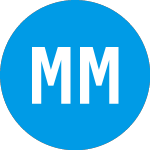
We could not find any results for:
Make sure your spelling is correct or try broadening your search.

 LORTAP KCOTS
4 days ago
LORTAP KCOTS
4 days ago
 LORTAP KCOTS
4 days ago
LORTAP KCOTS
4 days ago
 LORTAP KCOTS
5 days ago
LORTAP KCOTS
5 days ago
 LORTAP KCOTS
5 days ago
LORTAP KCOTS
5 days ago
 LORTAP KCOTS
5 days ago
LORTAP KCOTS
5 days ago
 LORTAP KCOTS
2 weeks ago
LORTAP KCOTS
2 weeks ago
 Giovanni
2 weeks ago
Giovanni
2 weeks ago

It looks like you are not logged in. Click the button below to log in and keep track of your recent history.
Support: +44 (0) 203 8794 460 | support@advfn.com
By accessing the services available at ADVFN you are agreeing to be bound by ADVFN's Terms & Conditions